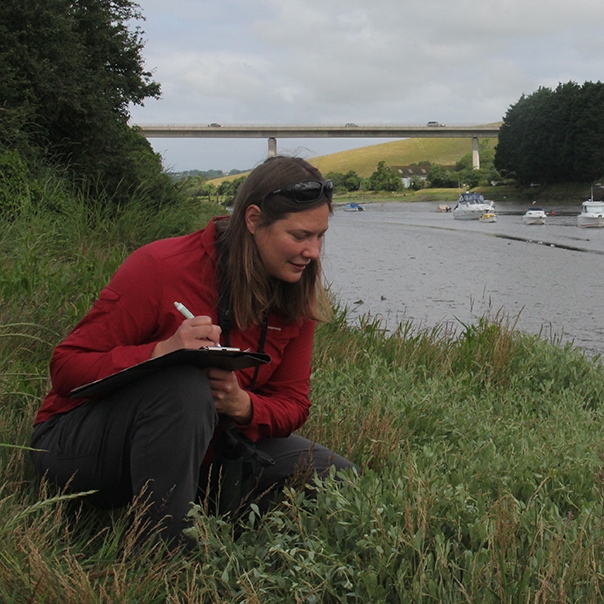Dr Hannah Mossman
Senior Research Fellow (Secondment)
Senior Lecturer, Manchester Metropolitan University

About me
I have always loved the seaside and always loved science, but never imagined I could have a job that combined both! After my undergraduate degree in Biological Science at Kings College London, I worked as Research Assistant on fish and rivers, and this is where I really got the research bug. I started my PhD in saltmarsh restoration at University of East Anglia in 2003 and have worked on coastal saltmarshes ever since.
After finishing my PhD and working on several research projects as a post-doc, I moved to Manchester Metropolitan University as a Lecturer in Ecology in 2013. I am passionate about teaching the importance of restoring the natural world to students, and love communicating my science to wider audiences. I have also continued my research into saltmarshes, investigating their biodiversity and more recently how much carbon they can store.
My role
I’ve been working with the WWT since 2014, when my colleagues and I started to research the development of WWT Steart Marshes and how much carbon it could store. Since that time my relationship with WWT has grown, and early in 2024 I started a secondment to the Conservation Evidence Team as a Senior Research Fellow.
My role is really exciting as I get to work on all things saltmarsh! I’m currently working on the Saltmarsh Code and developing a saltmarsh research strategy, as well as advising on many aspects of saltmarsh restoration and management.
Experience and interests
- Plant community ecology
- Ecological development of restored saltmarshes
- Blue carbon
- Talking about science to a wide range of audiences
- Training volunteers and the next generation of conservation scientists
Publications
- McMahon, L., Mossman, H. L., Dunk, R. M., Rae, S., Sparkes, R., Born, K., Tempest, J., Pontee, N. (2023) Saltmarsh Blue Carbon Summary Report. A summary of the carbon accumulation results from two studies. Report to Defra, UK. https://randd.defra.gov.uk/ProjectDetails?ProjectId=21451
- Mossman, H. L., Pontee, N., Born, K., Hill, C., Lawrence, P. J., Rae, S., . . . Dunk, R. M. (2022). Rapid carbon accumulation at a saltmarsh restored by managed realignment exceeded carbon emitted in direct site construction. PLoS One, 17(11), e0259033. doi: 10.1371/journal.pone.0259033
- Schuerch, M., Christie, E., Mossman, H. L., Moore, H. E., & Kiesel, J. (2022). Invited perspectives: Managed realignment as a solution to mitigate coastal flood risks – optimizing success through knowledge co-production. Natural Hazards and Earth System Sciences, 22(9), 2879-2890. doi: 10.5194/nhess-22-2879-2022
- Lawrence, P. J., Sullivan, M. J. P., & Mossman, H. L. (2022). Restored saltmarshes have low beta diversity due to limited topographic variation, but this can be countered by management. Journal of Applied Ecology, 59(7), 1709-1720. doi:10.1111/1365-2664.14179
- Mossman, H. L., Grant, A., & Davy, A. J. (2020). Manipulating saltmarsh microtopography modulates the effects of elevation on sediment redox potential and halophyte distribution. Journal of Ecology, 108(1), 94-106. doi:10.1111/1365-2745.13229